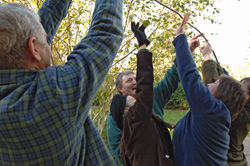Summary
What kinds of partnerships work best for the Forestry Commission?
Summary
Partnerships are an increasingly important feature of forest management and governance. The Forestry Commission works with a range of stakeholders,  including the third sector and civil society organisations, local authorities and other public agencies. Forest Research explored different partnership models to identify which models were most effective at meeting funding and sustainability targets and delivering impact.
including the third sector and civil society organisations, local authorities and other public agencies. Forest Research explored different partnership models to identify which models were most effective at meeting funding and sustainability targets and delivering impact.
Key findings and recommendations
Findings
- Transparency in decision-making and mutual objective setting
- Finding shared working practices (e.g. joint budget setting and accounting processes, joint forward job planning) that can be applied by partner organisations
- Mutual understanding of the organisations involved and their organisational objectives and professional context
- Mutual trust and respect which comes as a consequence of communication and understanding
- Individual champions and the effective management of people
Recommendations
- Plan enough time to develop good partnership working
- Build communication and learning systems to share best practice and problem-solving
- Ensure relationships are driven by objectives and outcome
- Base relationships on the complementary competencies brought by individual organisations
- Engaging with low risk, high capacity partners operating at both local and national level may facilitate the best forest policy outcomes
This work now forms the basis of an action plan for joint agency-third sector working (Compact statement). It is also informing government reviews of departmental engagement with civil society.
Publications
Funding and partners
Commissioned and funded by the Forestry Commission.
Status
2009-2011
Contacts
Bianca Ambrose-Oji and Anna Lawrence.
